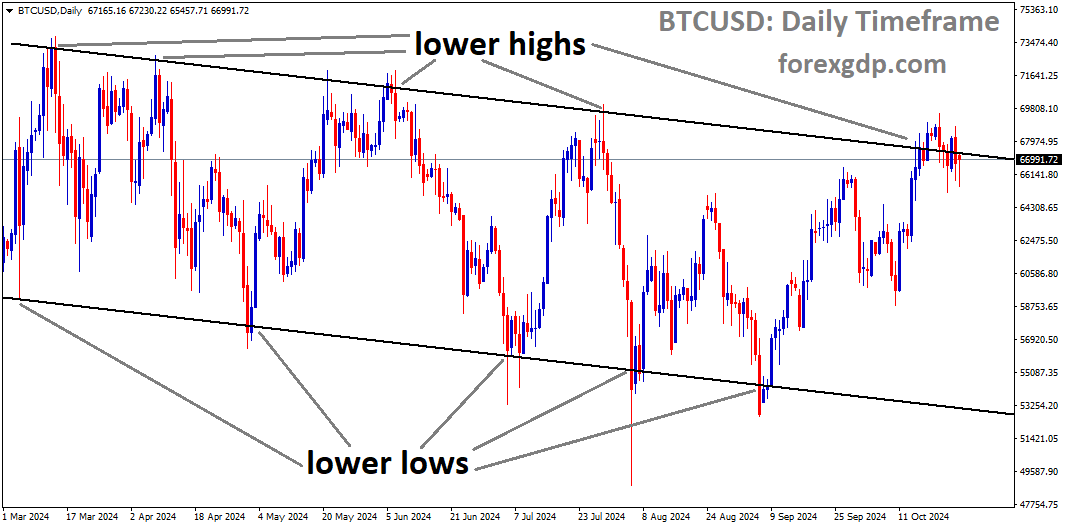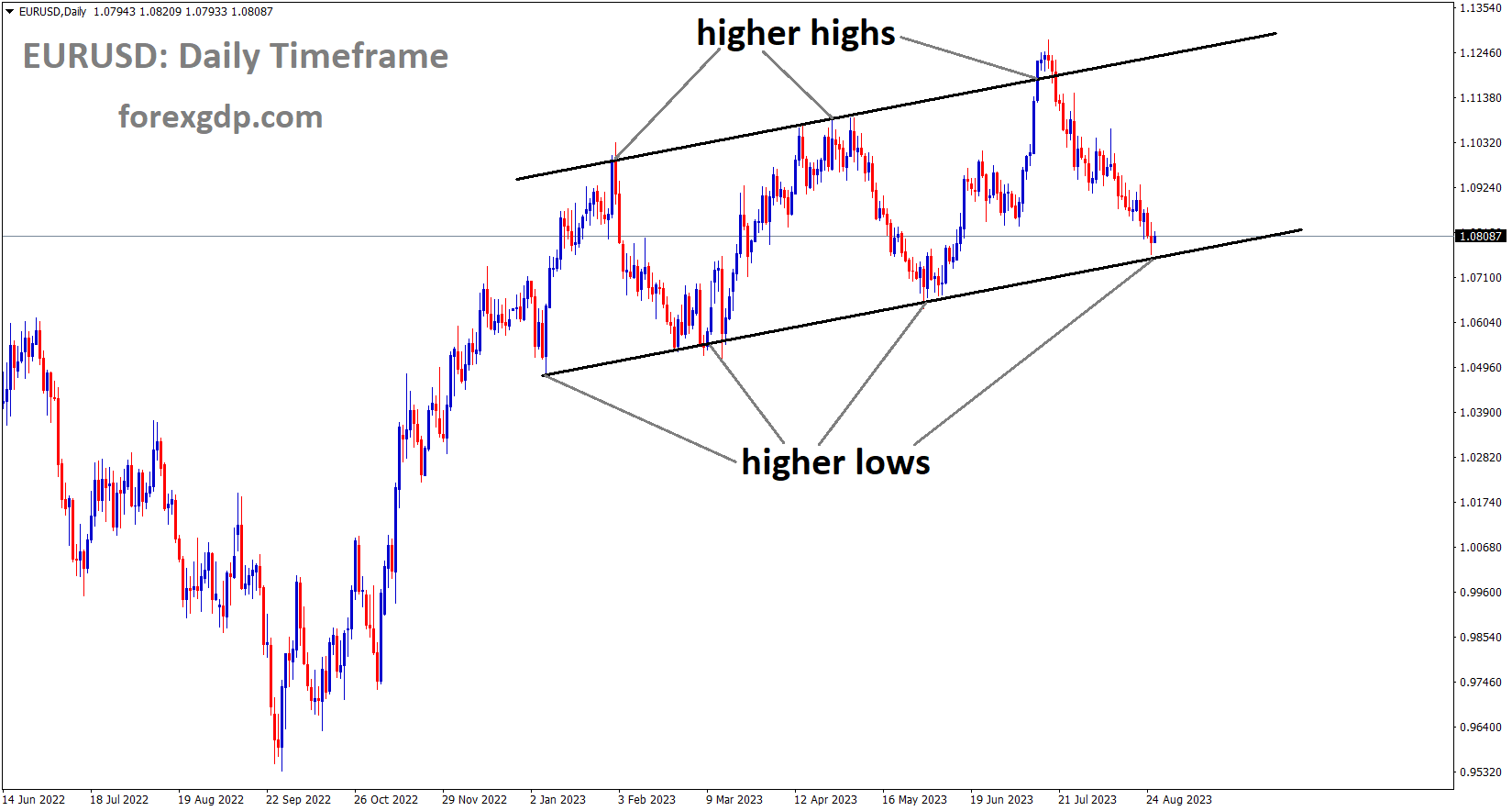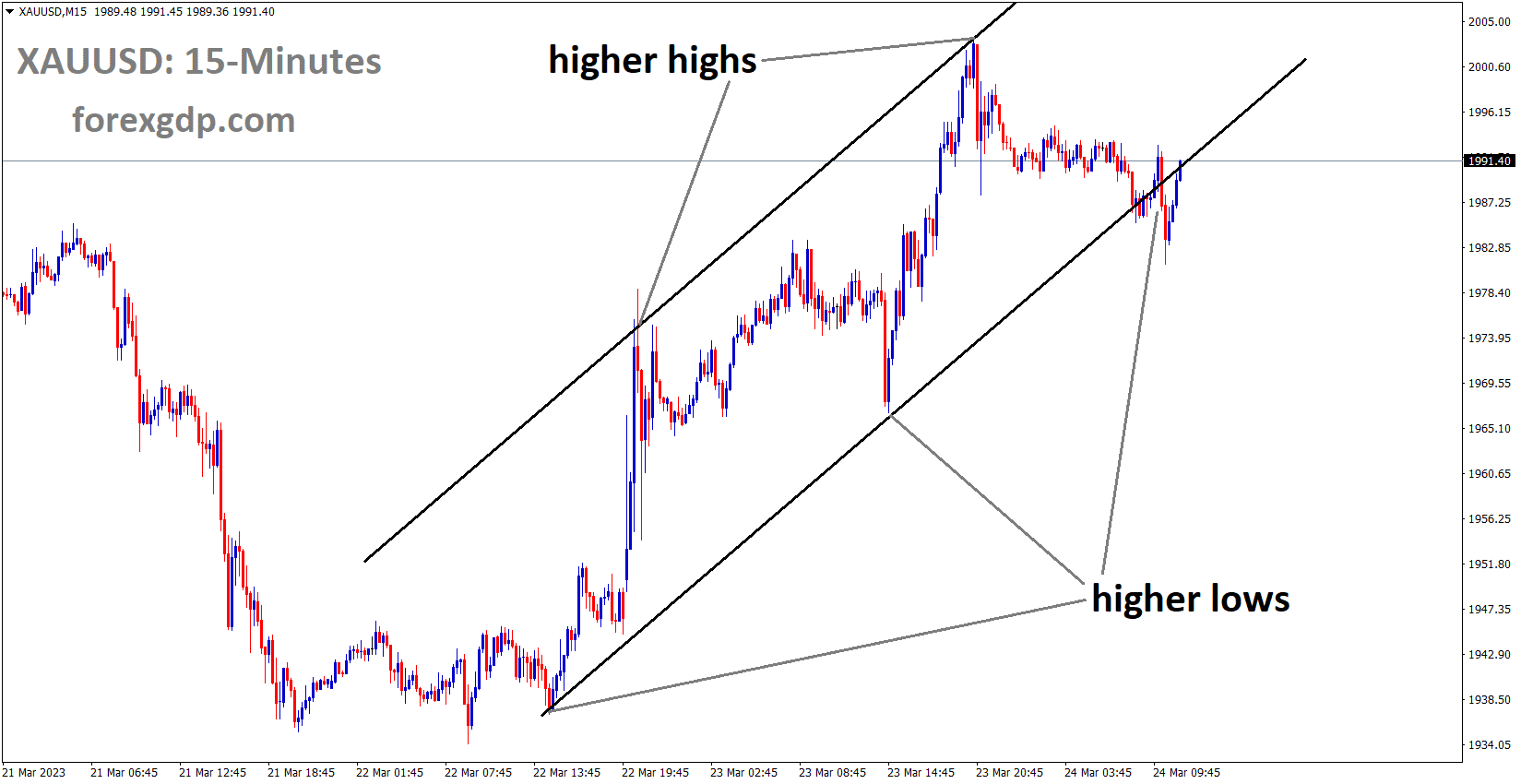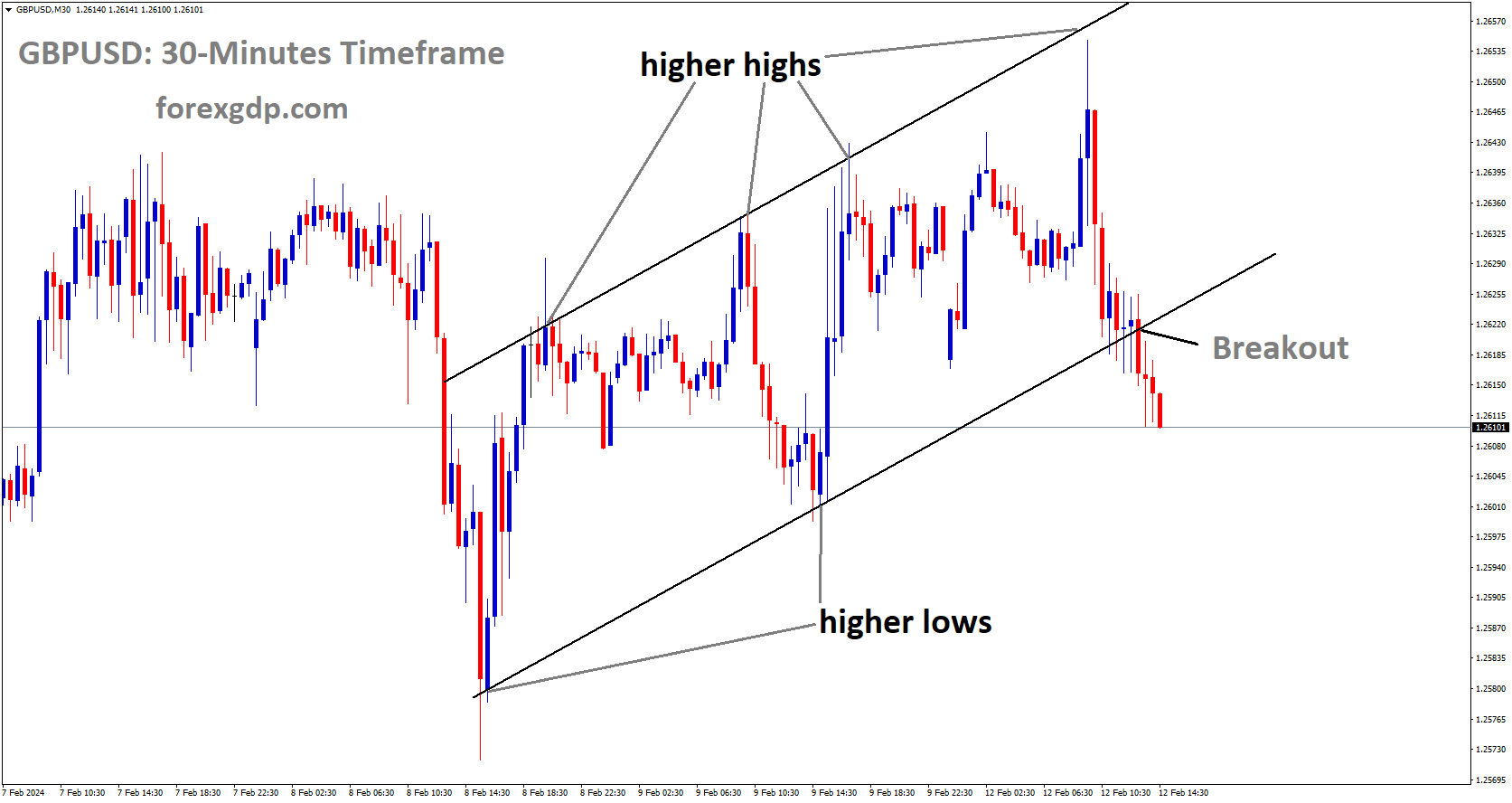Weekly Forecast Video on Forex, BTCUSD, XAUUSD
Stay ahead in the markets with our detailed analysis of gold and forex trade setups for this upcoming week, Oct 28 to Nov 01.
XAUUSD – Gold’s Value Rises as Geopolitical Crises Push Traders Toward Stability
Gold’s Growing Appeal Amid Uncertainty: What You Need to Know
Gold has always been a popular safe-haven asset, but recent events have thrust it even further into the spotlight. From political unrest to looming elections, several factors are shaping the gold market and drawing investors’ attention. In this article, we’ll explore why gold remains such a powerful asset during times of uncertainty, how global tensions and economic trends are impacting its appeal, and what this means for you if you’re considering adding gold to your portfolio.
Why Gold is a Go-To Asset in Times of Crisis
When uncertainty hits, gold often becomes the go-to choice for investors. But why is that? Gold has historically been seen as a store of value that can weather economic storms. Unlike paper currencies, which can fluctuate based on government policies, interest rates, and market sentiment, gold holds its value over time. It’s been used as a form of currency and wealth storage for thousands of years, and it continues to be an essential part of global financial markets.
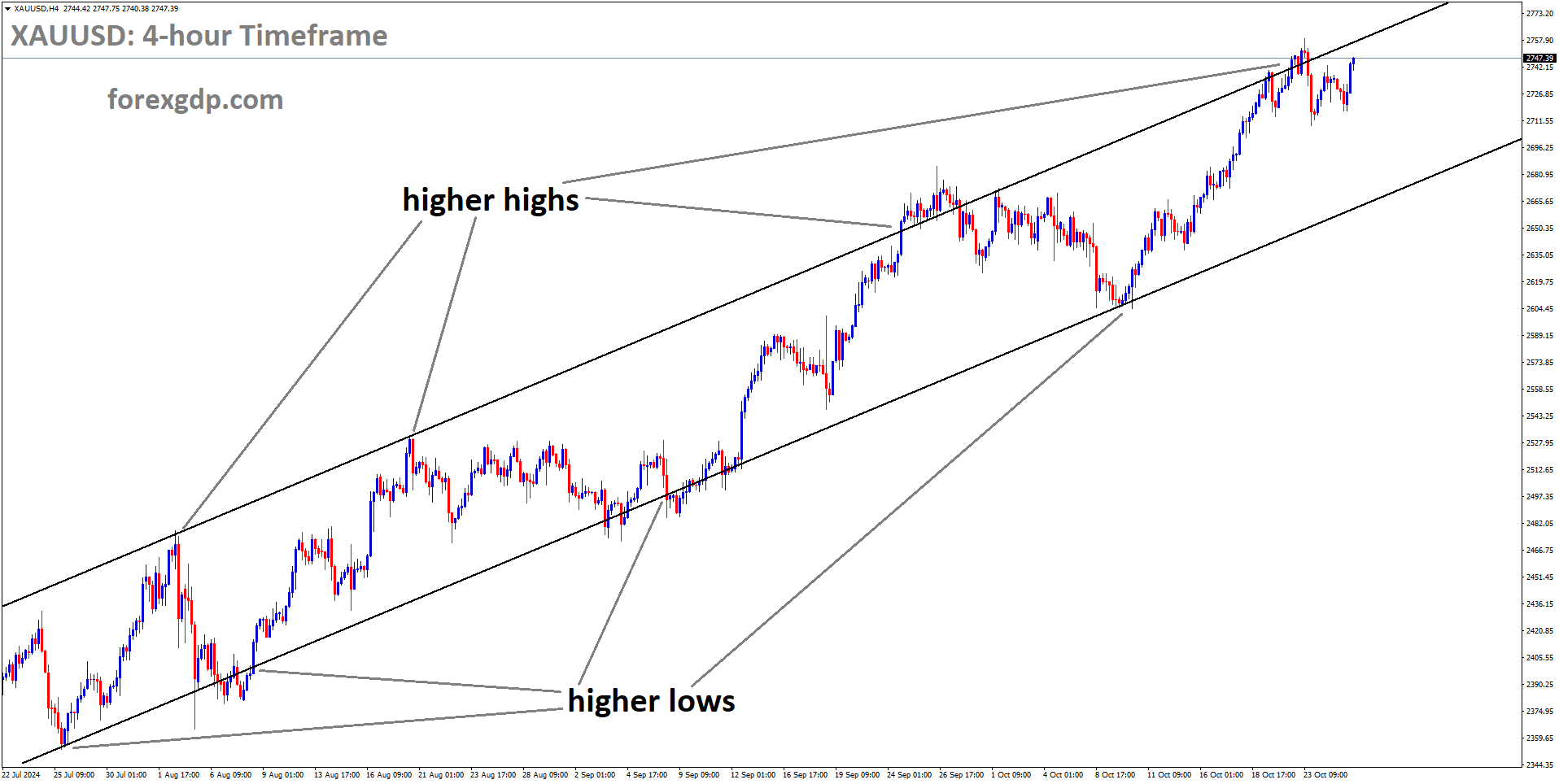
Geopolitical Tensions Boost Gold’s Popularity
In the current climate, geopolitical tensions are one of the biggest drivers behind gold’s steady rise. The ongoing conflict between Israel and Hezbollah has grabbed global headlines, drawing attention to the broader instability in the Middle East. In times of war or unrest, gold tends to perform well as investors seek safe assets that aren’t directly impacted by regional conflicts or volatile economies.
The Middle East in Focus
Recent clashes between Israel and Hezbollah have caused ripples in the financial markets. With hostilities flaring up along the Israel-Lebanon border, investors are naturally cautious. Safe-haven assets like gold are in higher demand, as they offer protection from the uncertainties surrounding conflict zones.
Israel has responded to these hostilities with targeted strikes on Hezbollah’s infrastructure in Lebanon, causing further tensions. As the situation escalates, there’s a likelihood that we’ll continue to see heightened demand for gold, which could keep prices firm or even push them higher. Investors want to protect their assets from potential market disruptions caused by geopolitical unrest.
The US Election’s Impact on Gold Prices
Another significant factor influencing the gold market is the uncertainty surrounding the upcoming US elections. As the race between Trump and Biden tightens, investors are growing increasingly cautious. The stakes are high, and the markets don’t react well to uncertainty. When elections are closely contested, like this one, it increases the potential for market volatility. Gold, being a stable and reliable asset, becomes an attractive option during such times.
Why Elections Matter to the Gold Market
Elections bring uncertainty. Who will win? What policies will they implement? How will this affect the economy? These are the kinds of questions that keep investors up at night. Gold offers a hedge against the unknown. When markets are shaky, gold tends to hold strong.
It’s also worth noting that election outcomes can impact monetary policies, such as interest rates and inflation. These, in turn, affect the value of currencies. When the value of currencies like the US dollar fluctuates, it has a direct effect on gold prices. Investors who want to protect their wealth from currency devaluation often turn to gold as a stable alternative.
The Dollar and Treasury Yields: What’s the Connection?
While geopolitical tensions and election uncertainty are fueling gold’s rise, other factors are putting a lid on how high prices can go. One of these factors is the strength of the US dollar and rising US Treasury yields.
A Strong Dollar Can Cap Gold’s Gains
Gold is priced in US dollars, so when the dollar strengthens, it can make gold more expensive for foreign buyers. This, in turn, can limit demand and cap price gains. Recently, the US Dollar Index (DXY), which measures the dollar’s performance against a basket of other currencies, has shown some strength. This has put some pressure on gold prices, preventing them from climbing too high.
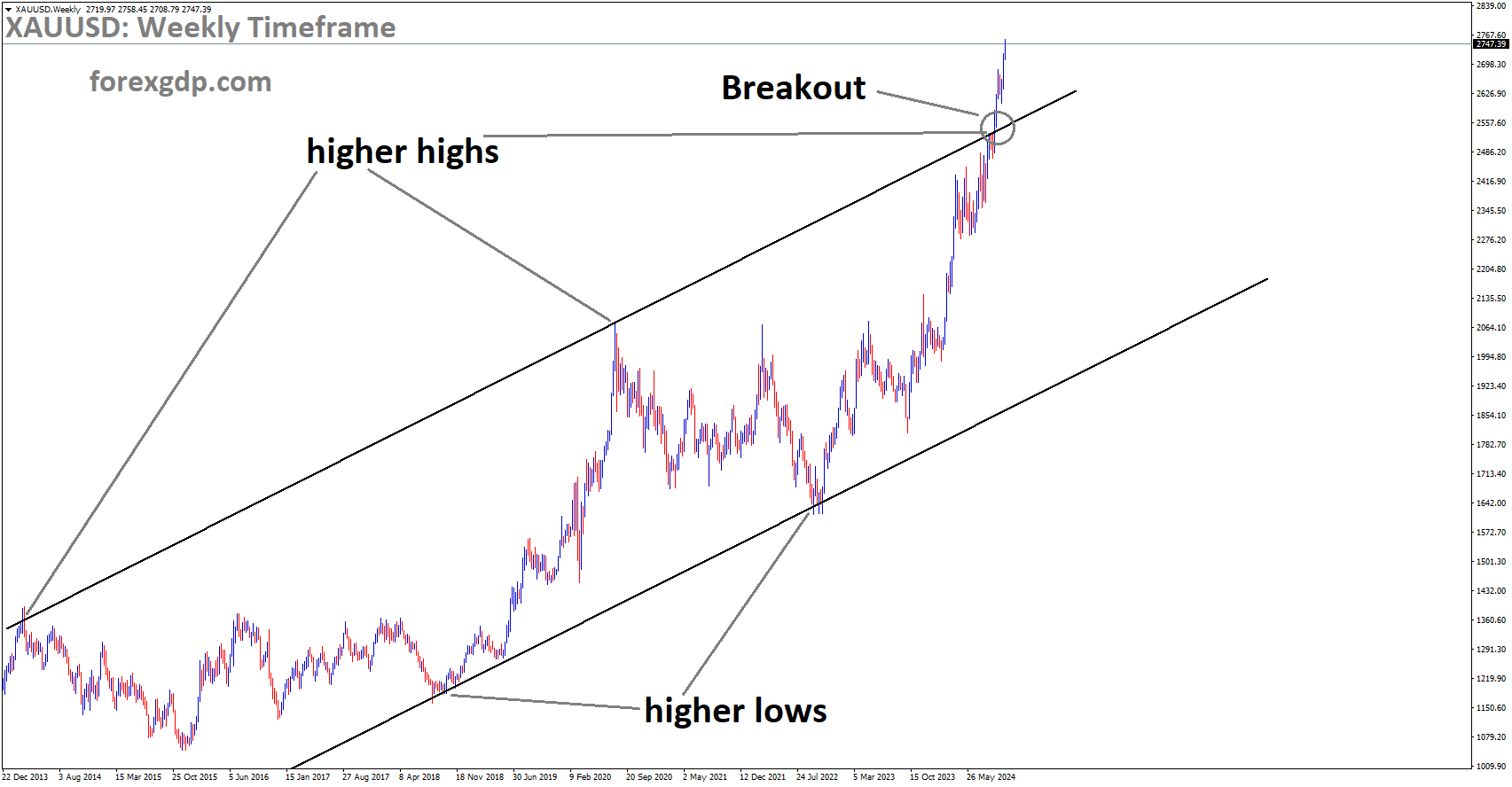
Rising Treasury Yields and Gold’s Performance
Treasury yields, particularly the yield on the 10-year US Treasury note, have also been on the rise. When yields increase, it makes government bonds more attractive to investors because they offer a higher return. This can sometimes draw investors away from gold, which doesn’t provide any yield. However, despite rising yields, gold has remained relatively firm, showing that its appeal as a safe-haven asset is still strong.
Economic Data and Gold: What’s the Connection?
Economic indicators, such as consumer sentiment and durable goods orders, also play a role in shaping gold prices. These data points give investors clues about the health of the economy, which can affect market sentiment and influence investment decisions.
Improved Consumer Sentiment and its Impact on Gold
The University of Michigan recently reported an improvement in consumer sentiment, with Americans feeling more optimistic about the economy. While this is generally a positive sign for the economy, it can put some downward pressure on gold, as it suggests that consumers might be more willing to spend and invest in riskier assets, such as stocks.
Durable Goods Orders Show Mixed Signals
Meanwhile, durable goods orders in the US showed a slight decline in September, but the drop wasn’t as steep as expected. This mixed data creates a complex picture for investors trying to gauge the overall health of the economy. While improved consumer sentiment could indicate that the economy is recovering, the decline in durable goods orders suggests there’s still some uncertainty.
Why Investors Should Keep an Eye on Inflation Expectations
Inflation is another critical factor that can impact gold prices. When inflation rises, the value of paper money decreases, making gold a more attractive option for investors. Recent data suggests that inflation expectations have remained relatively stable, but it’s essential to keep an eye on this metric, as any signs of rising inflation could drive more investors towards gold.
Final Thoughts
Gold continues to be a sought-after asset in the face of uncertainty, whether due to geopolitical tensions, economic data, or political elections. While factors like a strong dollar and rising Treasury yields may limit some of its gains, the safe-haven appeal of gold remains undeniable. Investors looking for a way to protect their wealth during volatile times are likely to keep turning to gold.
As you consider your investment options, keep in mind that gold has stood the test of time as a reliable store of value. Whether you’re concerned about political unrest, economic fluctuations, or inflation, gold can offer a level of security that other assets may not. It’s not just about following the trends; it’s about understanding why gold holds such a prominent place in the world of investing. If you’re looking for a safe bet in uncertain times, gold just might be your answer.
EURUSD – Euro Under Pressure: EUR/USD Battles to Hold 1.08 on Final Trading Day
EUR/USD Struggles as the Dollar Strengthens: Key Events to Watch Next Week
The EUR/USD currency pair continues to face pressure, struggling against a strengthening US Dollar. While there were signs of a possible rebound earlier this week, the Euro couldn’t sustain its momentum, and Friday’s trading session brought it back into bearish territory. The US Dollar’s broad upswing is playing a major role in this, making it tough for the Euro to regain ground.

With significant economic events coming up next week, both the Euro and Dollar are in the spotlight. But how will these events affect EUR/USD, and what should traders be keeping an eye on?
Eurozone: The Calm Before the Storm
The European market opens next week with relatively minor events but builds up to important economic data that will be critical for the Euro’s performance. While the start of the week might seem calm, it’s a time when traders are gearing up for important announcements later in the week.
Daylight Saving Time Kicks In
One of the first changes next week is the shift to Daylight Saving Time (DST) in Europe. While this may not sound like a big deal to everyone, for traders, it means a change in market open and close times by one hour. This shift can sometimes lead to small changes in trading patterns, and it’s essential to stay aware of these adjustments when planning trades.
Eurozone Growth Update
The Eurozone’s economic update is scheduled for Wednesday. The Gross Domestic Product (GDP) report will show how well the region’s economy performed during the third quarter of the year. Economists are expecting growth to remain steady, likely printing the same 0.2% increase seen in the previous quarter. On a year-over-year basis, the growth rate might tick up slightly from 0.6% to 0.8%, reflecting mild improvement.
While these numbers aren’t groundbreaking, they offer insight into how stable the European economy is, and they could help determine whether the Euro can recover some of its recent losses. A better-than-expected GDP could help boost the Euro, but if the data falls short, the bearish trend may continue.
Inflation Data: A Key Moment
On Thursday, the focus will shift to the Eurozone’s inflation figures. The Harmonized Index of Consumer Prices (HICP) for October will provide crucial insights into the inflationary pressures in the region. Inflation plays a big role in how central banks set interest rates, so the HICP data is something traders will be watching closely.
Economists are predicting a slight rise in inflation, with the annualized figure expected to jump from 1.7% to 1.9%. If inflation rises more than expected, it could force the European Central Bank (ECB) to reconsider its policies, potentially boosting the Euro. However, if inflation disappoints, the Euro could suffer further losses, especially if traders feel the ECB will remain dovish.
US Dollar: A Big Week Ahead
While the Eurozone has a few important updates, next week is packed with significant data releases in the United States, which could further strengthen the US Dollar.
Personal Consumption Expenditures (PCE) Price Index
One of the big highlights next week for the US Dollar is the release of the Personal Consumption Expenditures Price Index (PCEPI) on Thursday. This index is one of the Federal Reserve’s favorite measures of inflation, and it’s critical in shaping monetary policy.
For September, the core PCEPI is expected to rise slightly, coming in at 0.2% on a month-over-month basis, compared to 0.1% in August. This subtle increase may not seem like much, but it signals that inflationary pressures are still present in the US economy.
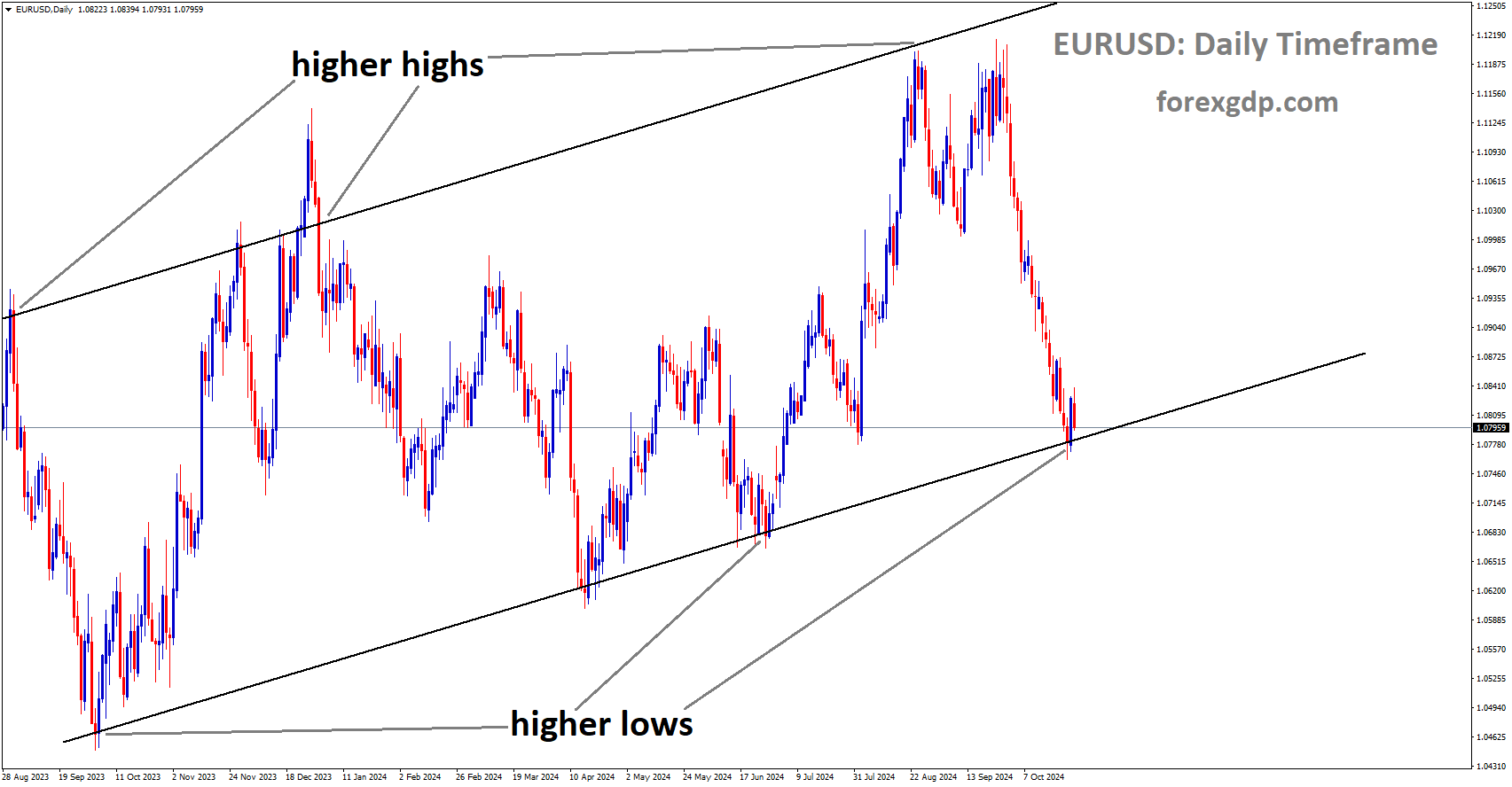
If the PCEPI numbers come in higher than anticipated, the US Dollar could continue to rally as traders anticipate more aggressive interest rate hikes by the Federal Reserve. However, if the PCEPI cools, it could ease some pressure off the Dollar, offering a chance for the Euro to recover.
Nonfarm Payrolls (NFP): The Big One
Perhaps the most highly anticipated report next week is the US Nonfarm Payrolls (NFP), due on Friday. This report shows how many jobs were added to the US economy over the past month and is a crucial indicator of economic health.
After an impressive gain of 254,000 jobs in September, economists expect a more modest figure for October, with predictions landing around 140,000 new jobs. While this slowdown might seem like a negative, the US labor market remains relatively strong, which continues to support the Dollar.
Traders will be keeping a close eye on how the NFP data compares to expectations. A significant deviation in either direction could cause substantial movements in the EUR/USD pair. If the job numbers exceed expectations, the Dollar could push higher, adding further pressure on the Euro.
EUR/USD Outlook: Navigating a Challenging Week
The upcoming week is filled with critical economic events that will likely shape the future direction of the EUR/USD currency pair. With the Euro facing strong headwinds from the US Dollar’s recent rally, it’s going to be an uphill battle for the Euro to regain its strength.
Here’s a quick breakdown of what to watch for:
- Daylight Saving Time: Europe’s market hours shift by one hour, which could lead to changes in trading patterns.
- Eurozone GDP Report: A steady growth rate of 0.2% is expected. Anything above or below this could trigger movement in the Euro.
- Eurozone Inflation (HICP): The inflation rate is expected to rise to 1.9%. Higher inflation could give the Euro a boost, while lower numbers could hurt it.
- US PCE Price Index: This inflation gauge will show how strong inflationary pressures are in the US economy. A higher print could further strengthen the Dollar.
- US Nonfarm Payrolls: A critical report for the Dollar. Any major surprises in the jobs data could cause significant shifts in the EUR/USD pair.
Final Summary: What Traders Should Expect
With the Euro struggling to find its footing and the US Dollar showing no signs of weakening, next week is set to be a pivotal one for the EUR/USD pair. The events lined up, from the Eurozone’s GDP and inflation reports to the US’s PCE Price Index and NFP jobs data, will likely create significant volatility in the markets.
Traders should be prepared for potential shifts in momentum based on how these key reports unfold. While the Euro has been on a losing streak, a surprise in the Eurozone’s economic data could give it a much-needed lift. On the flip side, stronger-than-expected US data, especially in the PCE and NFP reports, could push the Dollar even higher, adding further pressure on the EUR/USD pair.
As always, staying informed and keeping a close eye on these developments will be crucial for anyone trading EUR/USD next week. Keep your strategies flexible, and be ready to adapt as new information comes to light.
The week ahead holds many opportunities, but also plenty of risks—so trade wisely!
USDJPY – Currency Markets Pause: Yen Awaits Impact of Japan’s Upcoming Election
The Japanese Yen’s Struggle: What’s Behind It and What It Means for You
The Japanese Yen has been on a bumpy ride lately, with recovery attempts stalling against the US Dollar. There are many factors in play, from economic indicators in Japan to broader global market sentiment. If you’re curious about why the Japanese Yen isn’t bouncing back as expected and what this means in a larger context, let’s break it down in simple terms.
What’s Happening With the Japanese Yen?
The Japanese Yen (JPY) has been trying to claw its way back from a multi-month low but has had a tough time maintaining any real momentum. To understand why, we need to take a look at a few key factors influencing this situation.
Economic Factors in Japan Affecting the Yen
One of the main reasons the Yen isn’t recovering as much as expected is due to mixed economic data from Japan, particularly related to inflation. The Tokyo Consumer Price Index (CPI), which is one of the key measures of inflation, showed a bit of a slowdown in October. This means that prices aren’t rising as quickly, which can sometimes signal weaker economic conditions.
Additionally, inflation figures in Japan have stayed below the Bank of Japan’s (BoJ) 2% target. This creates doubt about whether the BoJ will raise interest rates anytime soon, which weakens the Yen. Generally, higher interest rates attract more investment, strengthening the currency. But with Japan’s inflation numbers staying low, any aggressive monetary policy seems unlikely, and this uncertainty is weighing heavily on the Yen.
Political Uncertainty in Japan
There’s also some political uncertainty going on in Japan, with an upcoming general election. Political events often make financial markets jittery because they introduce the possibility of changes in economic policy. Investors tend to shy away from currencies when there’s political uncertainty, especially when it’s unclear what direction the government might take in the future. This factor is making it even harder for the Yen to recover, as many investors are waiting to see the election results before making any major moves.
Global Factors Keeping the Japanese Yen Down
The issues impacting the Yen aren’t just happening in Japan. Global market conditions are also making things tough for the Yen, and here’s why:
Risk Sentiment in Global Markets
In times of uncertainty or crisis, investors typically flock to safe-haven assets like the Japanese Yen. However, the overall global risk sentiment has been relatively positive lately, meaning there hasn’t been a huge rush toward safer currencies. With things appearing relatively stable around the world, the demand for the Yen as a safe haven has dwindled.
Stronger US Dollar and Federal Reserve Policies
At the same time, the US Dollar (USD) has been holding strong, largely due to speculation about the Federal Reserve’s next moves. The Federal Reserve (Fed) has been gradually adjusting its monetary policy, and while there have been talks about easing, there’s now a growing expectation that they might not cut interest rates as aggressively as previously thought. This is giving the US Dollar a boost and making it more attractive than the Yen.
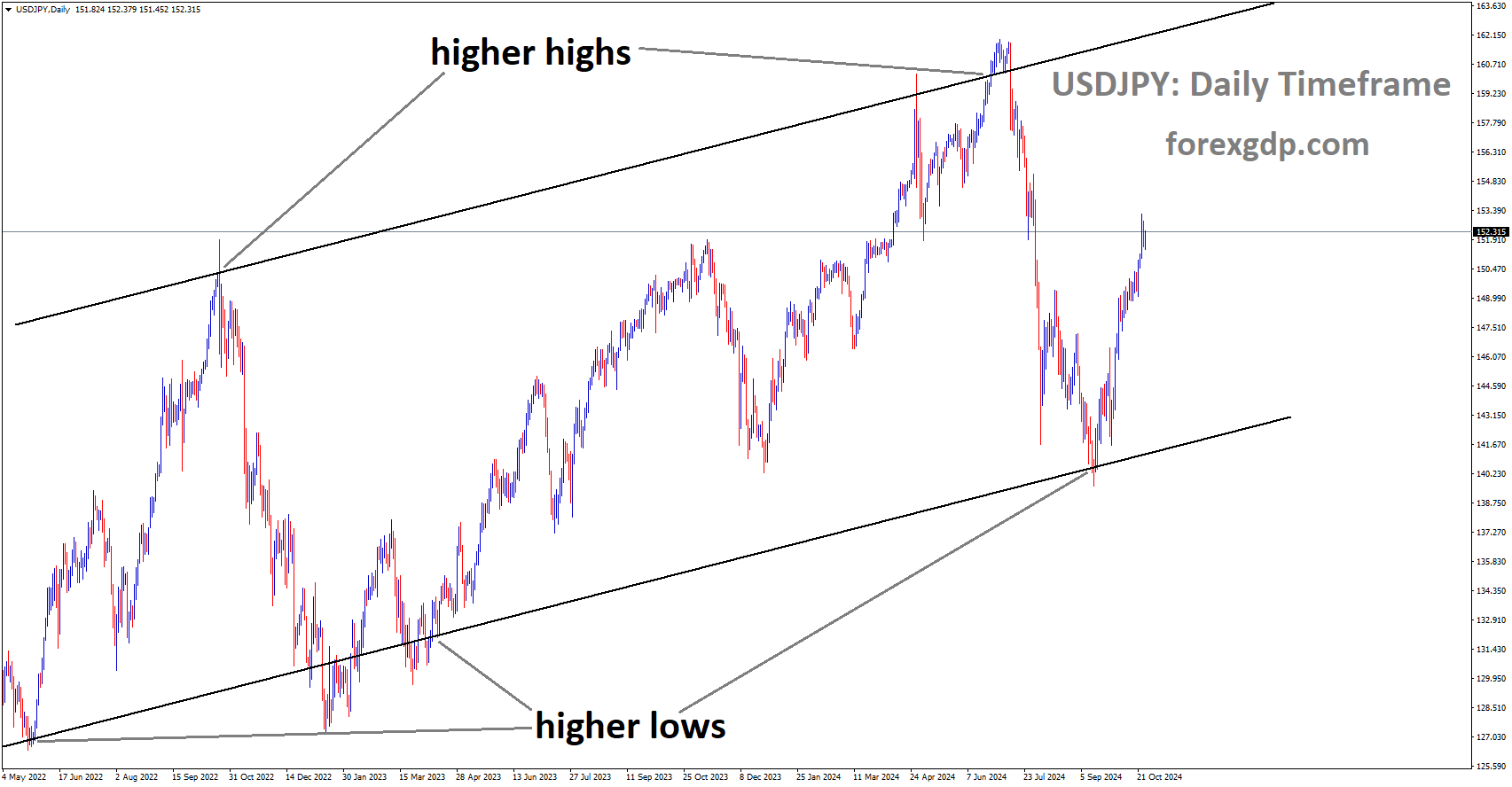
Whenever the US Dollar strengthens, it tends to pull other currencies like the Japanese Yen lower. In this case, even though there was a bit of a pullback in the US Dollar recently, the overall demand for USD remains high, keeping the Yen from gaining any significant ground.
What Do These Mixed Signals Mean for the Yen?
With all these factors at play, it’s no surprise that the Yen is struggling to recover. Let’s dive a bit deeper into what some of these mixed signals mean:
Inflation Data in Japan: A Double-Edged Sword
Inflation data from Tokyo has been confusing. On one hand, inflation is still present, but it’s below the BoJ’s target. This means that the BoJ might not see a need to raise interest rates aggressively, which, as we mentioned earlier, keeps the Yen weak. On the other hand, inflation that’s too low signals weak economic activity, which doesn’t bode well for the country’s overall economic health.
So, while inflation isn’t completely out of control, it’s not high enough to push the BoJ into making moves that would strengthen the Yen, like raising interest rates. This leaves the Yen in a bit of limbo, stuck between weak inflation and a lack of strong economic growth.
Political Factors: A Waiting Game
As Japan’s election looms, investors are playing a waiting game. No one wants to make any major financial moves until they have a better sense of what the post-election landscape will look like. This uncertainty is adding to the Yen’s struggles because investors are hesitant to buy into the Yen when the country’s political future is unclear.
Verbal Interventions From Japanese Officials
Japanese authorities have been vocal about their concerns over foreign exchange market volatility, with some even hinting at the possibility of intervention if the Yen continues to weaken. While this has temporarily held back some traders from aggressively shorting the Yen, it’s still unclear whether this verbal intervention will have a lasting impact.
What Could Happen Next?
While it’s impossible to predict the future with complete certainty, there are a few things to keep an eye on when it comes to the Japanese Yen in the coming weeks and months:
Inflation and Interest Rate Decisions
Japan’s inflation figures will continue to be a key factor to watch. If inflation does start to pick up, there could be more pressure on the BoJ to raise interest rates, which could strengthen the Yen. However, if inflation stays low, the Yen may continue to struggle.
Federal Reserve Actions
On the other side of the equation, the Federal Reserve will also play a big role in determining the Yen’s trajectory. If the Fed decides to ease off its rate-cutting plans, the US Dollar will likely remain strong, making it even harder for the Yen to recover.
Global Risk Sentiment
Global events, such as geopolitical tensions or economic crises, could change risk sentiment in a heartbeat. If investors suddenly feel the need to move toward safe-haven assets, the Yen could benefit, but for now, the relatively positive global risk tone isn’t helping the Japanese currency.
Key Takeaways
In summary, the Japanese Yen’s recent struggles come from a complex mix of domestic and international factors. On the home front, weak inflation data and political uncertainty are weighing the Yen down. Meanwhile, on the global stage, a strong US Dollar and relatively positive risk sentiment are making it even tougher for the Yen to recover.
With so many variables at play, the Yen’s future will likely depend on how these factors evolve in the coming months. For now, the Yen remains on shaky ground, and both traders and investors are watching closely to see how the situation unfolds.
If you’re following currency markets, it’s important to keep an eye on economic indicators in Japan, the Federal Reserve’s next moves, and any significant global events that could shift risk sentiment. These are the key drivers that will shape the Yen’s path in the near future.
GBPUSD – Pound Strengthens After BoE’s Mann Hints at Continued Tight Monetary Policy
Pound Sterling Consolidates Amid Economic Shifts and Inflation Challenges
The Pound Sterling (GBP) has been riding a wave of subtle recovery following some critical developments, including comments from Catherine Mann, a member of the Bank of England’s (BoE) Monetary Policy Committee, and the UK’s latest flash PMI report. Despite recent improvements, the broader economic picture remains somewhat volatile as traders weigh various factors such as inflation, economic activity, and international events, particularly in the US, where the upcoming presidential election is creating ripples across global markets.
Let’s dive into what’s happening with the Pound, its challenges, and how traders are navigating the current market landscape.
The State of UK Inflation: Challenges Ahead
One of the main talking points for the Bank of England is inflation, particularly in the services sector, which has been a sticking point for policymakers like Catherine Mann. Inflation has been a persistent issue for the UK, and while the latest data show that services inflation has eased below 5%, it’s still above the BoE’s target of 2%.
Why does this matter? Because inflation in services – which includes everything from healthcare to retail – can be particularly sticky. Mann has pointed out that despite recent improvements, more needs to be done to bring inflation in line with targets. This is critical because if inflation remains elevated, it could force the BoE to delay any interest rate cuts, despite what traders are hoping for.
What is Catherine Mann’s stance on rate cuts? Mann remains hawkish, stating that it would be “premature” to lower interest rates while inflation, especially in services, remains high. Her comments are crucial, as they signal that the BoE may be more cautious than expected when it comes to adjusting monetary policy. Mann’s focus on the relationship between wages and prices highlights a concern that inflationary pressures could persist longer than many had hoped.
UK Business Activity Slows but Continues to Expand
Another major factor impacting the Pound Sterling is the performance of the UK economy, which is measured through indicators like the Purchasing Managers’ Index (PMI). The flash PMI report for October showed that business activity in the UK continued to expand, but at a slower rate compared to previous months.
What does this tell us? The UK economy is still growing, but the pace of growth is moderating. This isn’t surprising, given the broader global slowdown and ongoing challenges such as inflation and supply chain disruptions. The good news is that the UK is performing better than some of its peers, such as the Eurozone and the US, where manufacturing output continues to contract.
However, the slower growth could also suggest that businesses are starting to feel the strain of higher costs and weaker consumer demand. This adds to the complexity of the situation for policymakers at the BoE, who need to balance the need for economic growth with the ongoing battle against inflation.
Global Factors: US Election and Its Impact on the Market
Beyond the UK, global events are also influencing the Pound Sterling’s performance, particularly the upcoming US presidential election. With the election looming, traders are increasingly betting on a win for former President Donald Trump. Why does this matter for the Pound? Because Trump’s policies, particularly on trade and taxes, could lead to higher tariffs and economic uncertainty for the UK and other trading partners of the US.
Many traders see a potential Trump victory as bullish for the US Dollar, which could create headwinds for the Pound. A stronger US Dollar typically weighs on other currencies, including the Pound, as investors flock to the safety and higher yields of US assets.
However, there’s another side to the story. If Vice President Kamala Harris wins, it could lead to a sharp repricing of the US Dollar, as her policies may be seen as less favorable to the Greenback. This could, in turn, provide some relief to the Pound and other major currencies.
How the US Federal Reserve’s Policy Affects the Pound
In addition to the US election, the actions of the Federal Reserve (Fed) play a significant role in the global currency markets. The Fed is widely expected to continue its gradual path of cutting interest rates, with further cuts anticipated in November and December. While these cuts are expected to be modest – 25 basis points each time – they could still have a significant impact on the US Dollar.
Why does this matter for the Pound? If the Fed continues to cut rates, it could lead to a weaker US Dollar, which might provide a boost to the Pound Sterling. On the flip side, if the Fed signals that it will slow down or stop cutting rates, the Dollar could strengthen, making it harder for the Pound to gain ground.
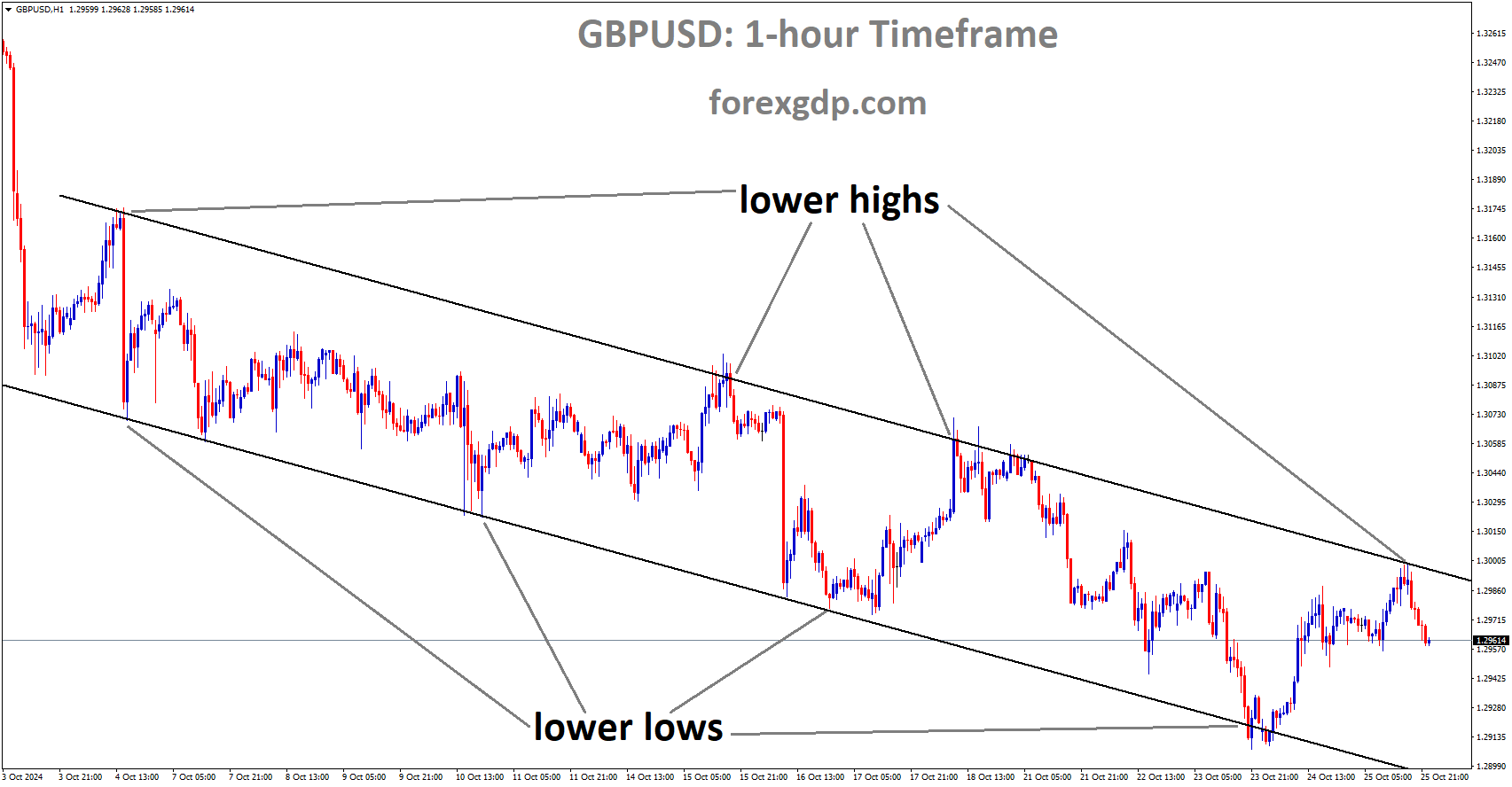
At the same time, the outlook for the US economy remains uncertain, with mixed signals coming from the latest economic data. For example, while new orders for durable goods contracted at a slower pace than expected, the broader economic picture remains unclear. This adds to the uncertainty for traders trying to navigate the GBP/USD pair.
What Traders Are Watching: Key Market Drivers
So, what should traders be keeping an eye on? Here are a few key factors that will likely drive the Pound Sterling’s performance in the coming weeks:
- Inflation Data: Inflation remains the top priority for the BoE and traders alike. Any signs that inflation is cooling – particularly in the services sector – could provide the BoE with the confidence it needs to start cutting rates.
- Economic Growth: The pace of economic growth in the UK will also be crucial. If the economy continues to expand, even at a slower rate, it could support the Pound. However, if growth slows significantly, it could raise concerns about the broader outlook.
- US Election: The outcome of the US election will be a major market mover. A win for Donald Trump could lead to a stronger US Dollar, while a victory for Kamala Harris might lead to a weaker Dollar and a potential boost for the Pound.
- Federal Reserve Policy: The Fed’s decisions on interest rates will also play a critical role in shaping the outlook for the Pound. A more aggressive Fed could support the Dollar, while a more dovish stance could provide relief to other currencies, including the Pound.
Final Thoughts
The Pound Sterling is in a delicate position, balancing between the challenges of high inflation, slower economic growth, and global uncertainty. Traders are closely watching for any signs of a shift in policy from the BoE, particularly as inflation remains a key concern. At the same time, global events like the US election and Federal Reserve policy will play a significant role in shaping the currency’s performance.
For now, the Pound remains in a consolidation phase, as traders digest the latest developments and await further clarity on the outlook for inflation, interest rates, and economic growth. While the road ahead may be bumpy, there are still opportunities for the Pound to gain ground – particularly if inflation continues to cool and global events play out in its favor.
USDCAD – USD/CAD Hovers Around Two-Month Peak, Markets Brace for Election Impact
USD/CAD Stays Strong as Dollar Gains Momentum
The USD/CAD pair has been making headlines as it hovers near its two-month high, catching the attention of traders and investors alike. While this currency pair’s movement is often driven by various economic factors, there’s more than meets the eye when it comes to its current performance. What’s driving the strength of the US Dollar (USD)? And how is the Canadian Dollar (CAD) faring amidst fluctuating oil prices? Let’s dive into the details to get a clearer picture.
A Closer Look at USD/CAD’s Recent Performance
Over the past few days, USD/CAD has held its ground, maintaining a steady performance near the 1.3850 mark. This comes after the pair surged to a two-month high, sparking curiosity about what exactly is propelling the USD. A strong US Dollar has been one of the primary factors, supported by a range of factors on both the domestic and global stages.
One of the notable factors behind the USD’s strength is the speculation about the Federal Reserve’s approach to interest rate policies. Initially, there were expectations that the Fed might aggressively cut interest rates, but now, the sentiment has shifted. Many believe that the central bank may take a more cautious approach, which is providing solid backing for the USD. This subtle change in monetary policy expectations plays a critical role in how currencies behave in the market.
Another significant reason why the USD is holding its strength is tied to the political landscape in the United States. With the possibility of a second term for former President Donald Trump becoming a hot topic, traders are paying close attention to how his potential return could impact the economy. Trump’s past economic policies, including higher tariffs and tax reductions, have fueled optimism among some investors that a repeat of his presidency could further strengthen the USD.
Why the US Dollar is Riding High
Political Influence on the Greenback
Political events can have a direct and powerful influence on a country’s currency, and the current political atmosphere in the US is no exception. With the presidential election approaching, the USD is under the spotlight, particularly due to former President Donald Trump’s potential return to power.
During a recent event in Las Vegas, Trump spoke about his economic plans, which are seen as supportive of the USD. By mentioning policies that focus on economic growth for all Americans, including minority communities, Trump aims to bring back the confidence that some investors placed in his first term.
On the other hand, the current administration, represented by Vice President Kamala Harris, has been busy rallying support from notable figures, including rock legend Bruce Springsteen, Tyler Perry, and even former President Barack Obama. These political rallies, especially in battleground states like Georgia, have become focal points in the race, adding yet another layer of complexity to how the USD may perform in the near future.
Federal Reserve’s Influence on the US Dollar
Another crucial element supporting the USD is the Federal Reserve’s evolving approach to monetary policy. While the market initially anticipated a series of aggressive interest rate cuts, recent expectations suggest a more restrained approach. This change in expectations regarding rate cuts has given the USD a boost. In times of uncertainty, traders often flock to safe-haven currencies like the USD, which tends to perform well when interest rate cuts are delayed or minimized.
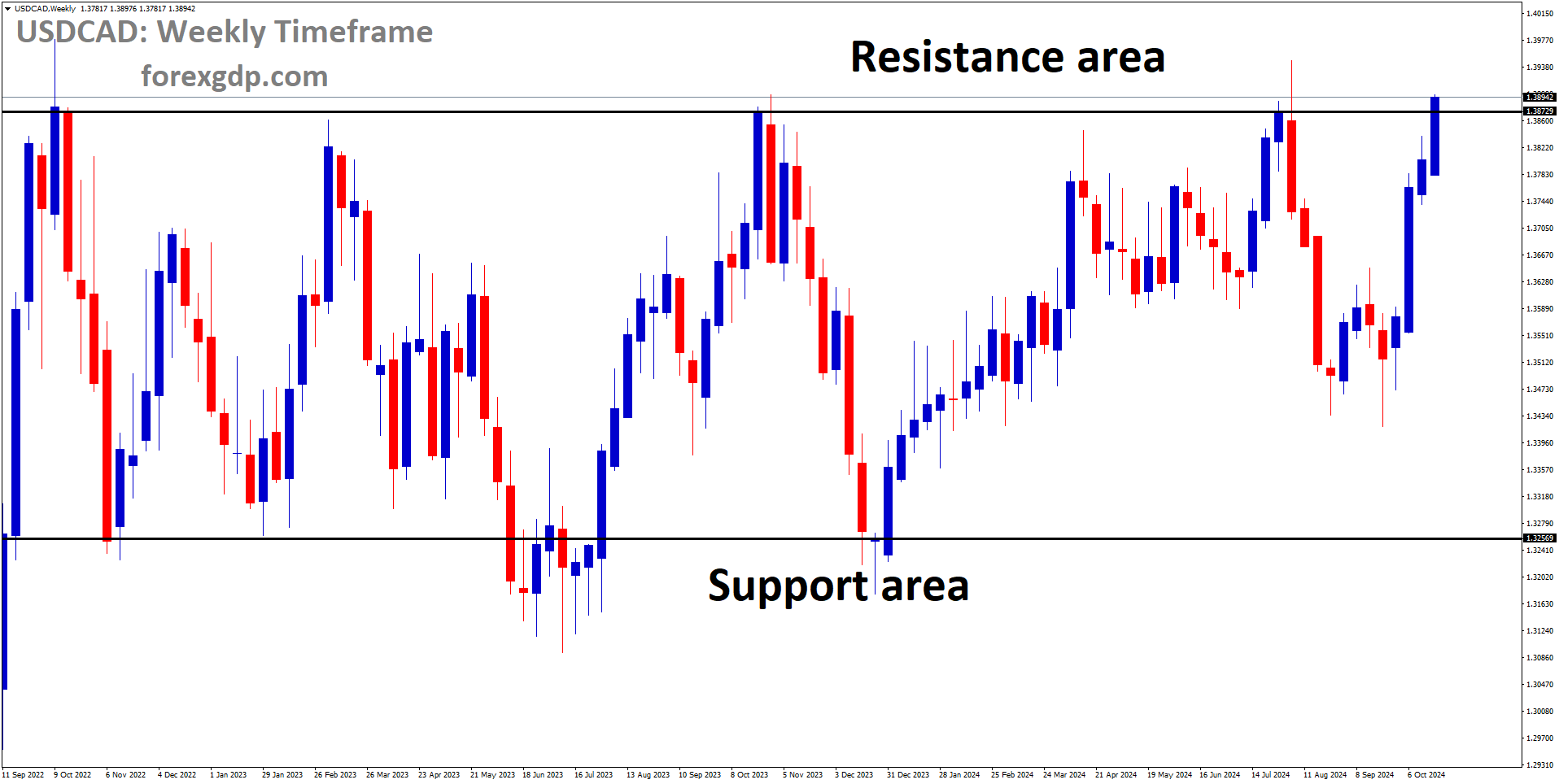
The Federal Reserve’s cautious stance suggests that the economy, although facing some headwinds, may not require drastic monetary interventions. This has strengthened the market’s confidence in the USD and driven it higher against currencies like the Canadian Dollar.
The Canadian Dollar’s Struggles Amidst Weak Oil Prices
While the USD is enjoying its time in the spotlight, the Canadian Dollar (CAD) is facing some challenges. As a commodity-linked currency, the CAD is heavily influenced by oil prices. With crude oil prices on a downward trend, the CAD has been struggling to keep pace with its southern neighbor, the USD.
The Role of Oil Prices
Canada is one of the largest oil exporters to the United States, which means that fluctuations in oil prices can have a direct impact on the CAD. In recent days, oil prices have been experiencing losses, with West Texas Intermediate (WTI) crude seeing its third consecutive day of declines. This has put pressure on the CAD, as lower oil prices often signal weaker demand for the currency.
The relationship between oil prices and the CAD is long-established. When oil prices fall, Canada’s economy, which relies heavily on oil exports, tends to feel the effects. As a result, the CAD weakens, especially when compared to currencies like the USD that are backed by strong economic fundamentals and political stability.
Traders’ Focus on Canada’s Economic Data
With oil prices in decline, traders are shifting their attention to Canada’s economic data to get a sense of where the CAD might be headed next. One key piece of information is Canada’s Retail Sales data, which is set to be released shortly. This data will provide insight into consumer spending in Canada, which is a critical component of the country’s economic health.
Additionally, Bank of Canada (BoC) Governor Tiff Macklem’s scheduled appearance at an IMF meeting, where he will address journalists, is also something traders will be keeping an eye on. Any comments from Macklem regarding monetary policy or economic outlook could further influence the CAD’s performance in the short term.
The Bigger Picture: What to Watch For
As we look ahead, several factors could impact the future of the USD/CAD pair. From political developments in the United States to ongoing fluctuations in oil prices, there’s no shortage of variables that could influence this currency pair in the coming weeks.
US Presidential Election: A Key Driver
The outcome of the US presidential election will undoubtedly play a major role in shaping the future performance of the USD. If Donald Trump secures a second term, his economic policies could give the USD an additional boost. However, if the current administration remains in power, the market will likely respond to its ongoing policies, which may focus on different priorities, including inflation management and economic recovery.
Oil Prices and the Canadian Economy
For the CAD, oil prices will continue to be a significant factor. If oil prices stabilize or begin to rise again, the CAD could regain some of the ground it has lost. Conversely, if oil prices continue to fall, the CAD may remain under pressure, especially against a strong USD.
Additionally, any changes in Canada’s economic data, such as Retail Sales or inflation figures, could also sway the market’s perception of the CAD. Traders and investors will be paying close attention to how the Canadian economy performs in the coming months.
Final Thoughts
The USD/CAD pair has been capturing attention as it trades near its two-month high. With the US Dollar benefiting from shifting expectations around Federal Reserve policy and political developments, and the Canadian Dollar facing challenges due to declining oil prices, it’s a fascinating time to watch this currency pair. As we move forward, all eyes will be on key economic data, oil prices, and, of course, the US presidential election. Stay tuned!
USDCHF – USD/CHF Holds Ground at 0.8650: Could Election Volatility Spark a Breakout?
AUDUSD – US Dollar Stabilizes, Keeping AUD/USD Firm Above Critical 0.6000 Level
AUD/USD Holds Steady as US Dollar Struggles: Key Events Investors Should Watch Out For
The AUD/USD currency pair has been the center of attention recently, holding steady above the key level of 0.6000. As the US Dollar (USD) attempts to recover from a slight dip, investors have their eyes glued to what’s coming next. With crucial economic events just around the corner, both the Federal Reserve’s (Fed) policy actions and Australian economic data are set to shape the pair’s future direction.
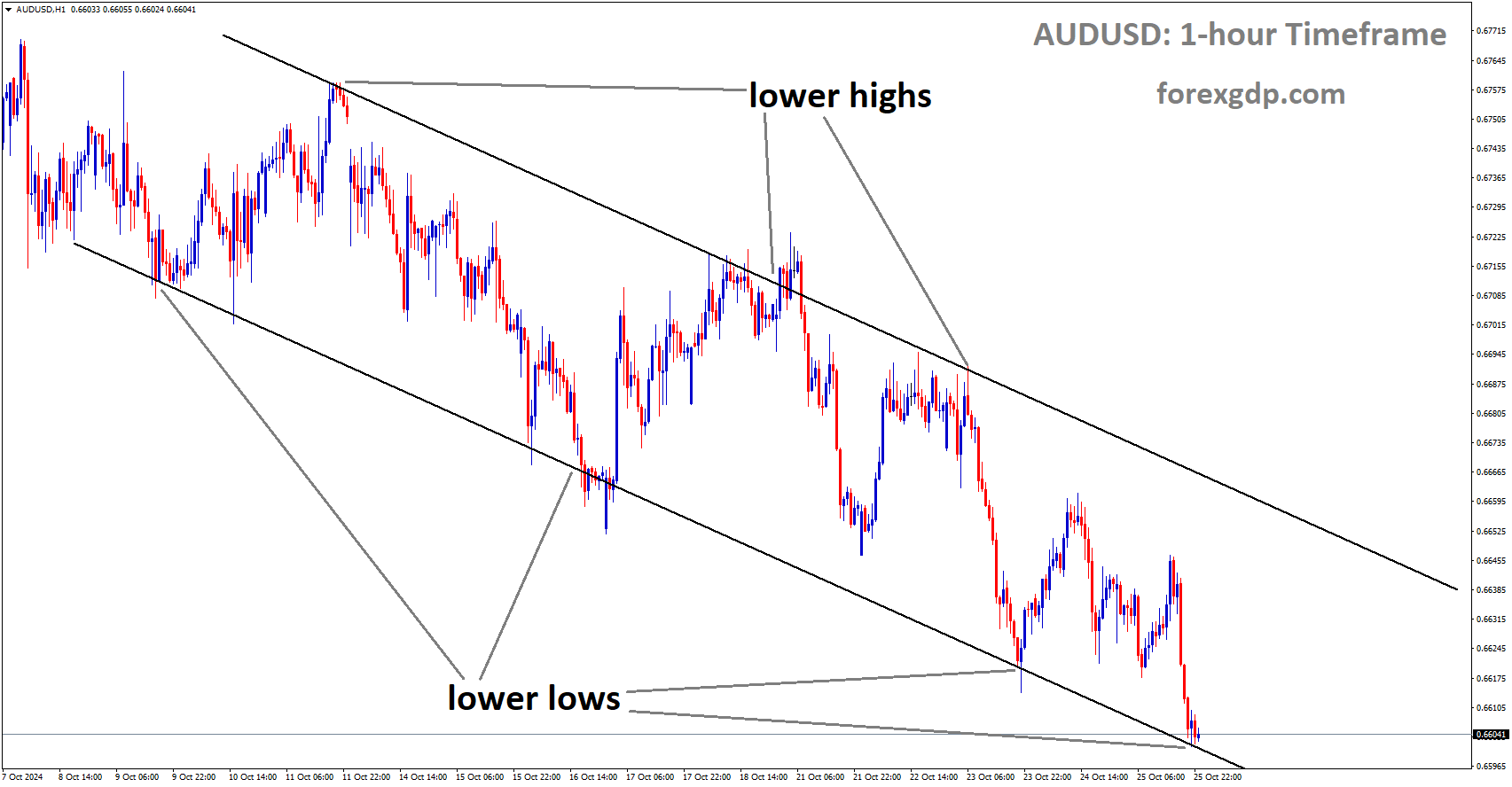
Let’s dive into the key factors driving the AUD/USD movements, what investors are looking out for, and why this matters to the broader market.
US Dollar Struggles After Recent Correction
The AUD/USD pair is currently consolidating above the 0.6000 level, as the US Dollar steadies after a correction earlier in the week. This is not just a matter of price movement, but a reflection of broader expectations around what the Federal Reserve might do next.
The US Dollar Index (DXY), which measures the strength of the USD against a basket of other currencies, remains near 104.00. While the USD has experienced some downward pressure, its downside appears limited. Why? Because many investors believe that the Federal Reserve will take a more cautious approach to lowering interest rates than was previously expected.
For some time now, there’s been widespread speculation around whether the Fed would aggressively cut rates to stimulate the US economy. However, recent developments indicate that the Fed might pursue a gradual approach when it comes to easing monetary policy. And this perception has kept the USD relatively stable.
Federal Reserve’s Gradual Approach to Rate Cuts
One of the biggest drivers behind the USD’s current strength is the Federal Reserve’s policy direction. The market was initially expecting faster and deeper rate cuts. But things are changing.
According to the CME FedWatch tool, traders are confident that the Federal Reserve will cut interest rates by a typical 25 basis points (bps) at its upcoming meetings in November and December. This comes after the Fed kicked off its policy-easing cycle in September, with an unusual 50 bps rate cut, reducing the interest rate range to 4.75%-5.00%.
The change in pace suggests that the Fed may not be in as much of a rush to lower rates, keeping the USD supported. In addition, political factors are also at play, with the upcoming US elections casting a shadow on future economic policies.
Potential Impact of US Elections on the Dollar
It’s impossible to talk about the US Dollar without mentioning the political landscape. Many investors are keeping a close watch on the US elections scheduled for November 5th. There is a growing expectation that if Donald Trump returns to the White House, his policies could lead to both higher tariffs and lower taxes.
What does this mean for the US Dollar? Well, higher tariffs could have a mixed impact on the US economy. On one hand, they could raise the costs of imports, which might lead to higher inflation. On the other hand, lower taxes could stimulate growth, creating an environment where the Federal Reserve feels compelled to keep interest rates higher than they otherwise would.
In the short term, these political uncertainties are creating a “wait-and-see” approach among investors. The interplay between US politics and monetary policy will undoubtedly continue to influence the USD in the coming months.
Australian Dollar Underperforms Despite Stable Economic Outlook
Turning to the Australian Dollar (AUD) side of the equation, it’s clear that the Aussie hasn’t had the best month. The AUD has underperformed against several of its major counterparts. Even though the Reserve Bank of Australia (RBA) is expected to keep its Official Cash Rate (OCR) unchanged for the rest of the year, investors remain cautious.
The latest employment data from Australia painted a positive picture of the job market, with more Australians finding work than expected. This should, in theory, boost the AUD, as a strong job market is usually linked to more spending, economic growth, and potentially higher interest rates. However, the Aussie Dollar remains subdued.
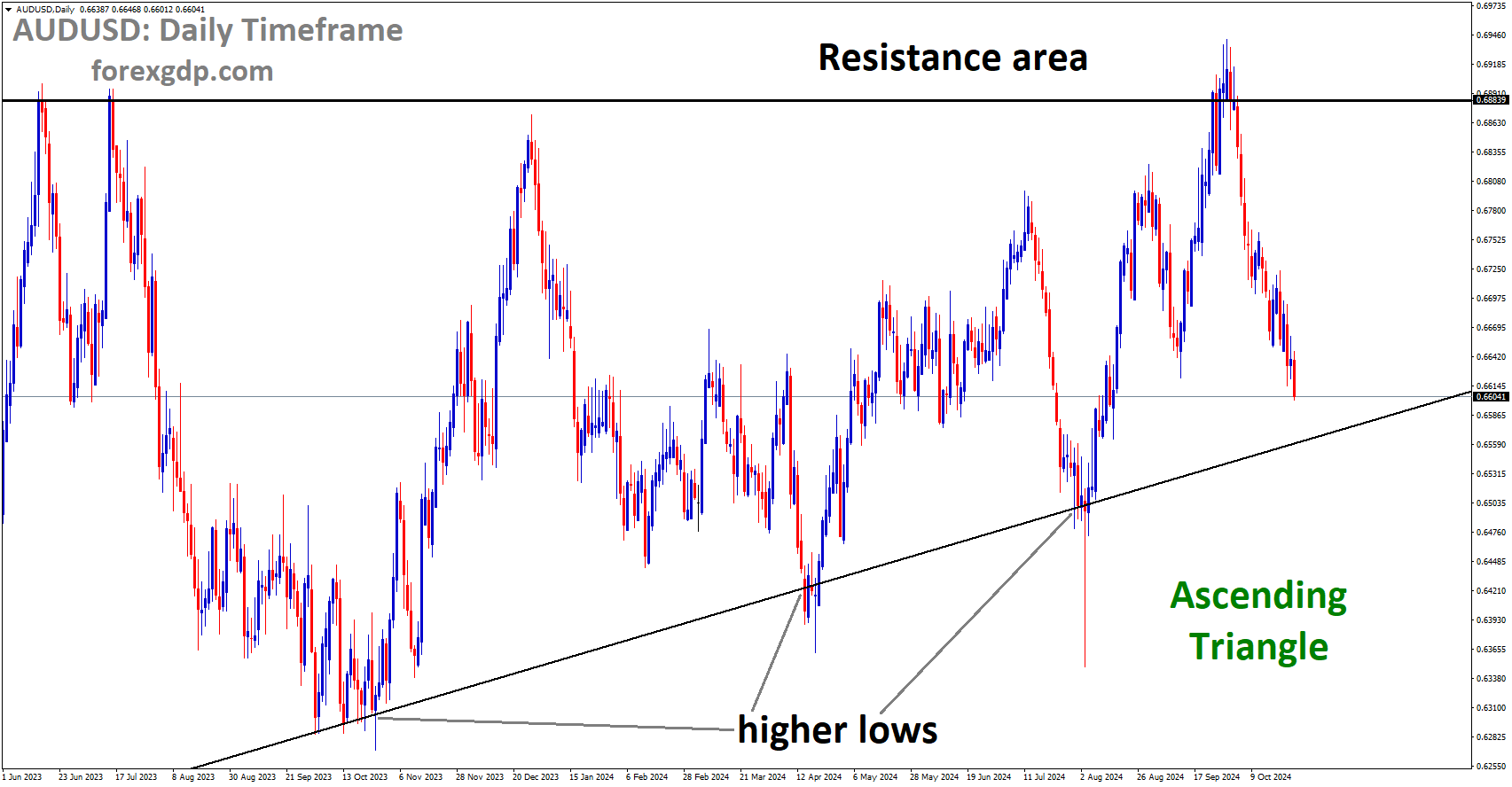
Why hasn’t the Australian Dollar gained more traction? One reason could be that global risk sentiment is leaning more in favor of safe-haven currencies like the US Dollar. Even though Australia’s economy is relatively stable, global factors such as trade tensions, commodity price fluctuations, and concerns about global growth are weighing on riskier currencies like the AUD.
Upcoming Australian Inflation Data Could Be a Game-Changer
Looking ahead, one of the key events on the horizon is the release of the Australian Q3 Consumer Price Index (CPI) data. This data will give investors a clearer picture of how inflation is tracking in Australia, which could influence expectations around the Reserve Bank of Australia’s monetary policy.
In the second quarter of this year, inflation in Australia rose by 1%. While this is still within the RBA’s target range, any signs that inflation is either heating up or cooling down could lead to shifts in market sentiment.
If inflation continues to rise, it might force the RBA to consider raising interest rates again to keep prices in check. Conversely, if inflation starts to slow, the RBA could have more room to maintain its current monetary stance without worrying about overheating the economy.
What Should Investors Focus On Moving Forward?
As we look ahead, there are a few key factors that will likely determine the direction of the AUD/USD pair in the coming weeks:
- Federal Reserve’s Next Moves: Keep an eye on the upcoming Fed meetings in November and December. Any changes in tone or pace regarding interest rate cuts will affect the USD.
- US Political Landscape: With the US elections on the horizon, potential shifts in economic policies could impact both the US Dollar and global markets.
- Australian Inflation Data: The release of Q3 CPI data in Australia could provide fresh insights into the RBA’s future policy decisions.
While the AUD/USD pair is currently holding steady, there’s plenty of potential for volatility as these events unfold. Investors should stay informed and keep an eye on both global economic trends and domestic factors that could sway market sentiment.
Final Summary
The AUD/USD pair remains at a critical juncture as both the US Dollar and Australian Dollar face unique pressures. On the one hand, the Federal Reserve’s gradual approach to cutting interest rates has lent support to the USD, while political factors, including the upcoming US elections, add another layer of complexity. On the other hand, the AUD has underperformed despite a stable domestic economic outlook, with investors awaiting key data such as the Australian Q3 CPI to provide fresh clues on the Reserve Bank of Australia’s future policy.
For investors, the coming weeks are crucial. Keeping a close eye on developments from both sides of the Pacific will be essential for understanding where the AUD/USD pair is headed.
NZDUSD – NZD/USD Nears 10-Week Low Before Crucial US Consumer Sentiment Release
NZD/USD: What’s Happening with the Pair, and What You Should Know
The NZD/USD pair recently hit a 10-week low and traders are wondering what’s going on. While market analysts often dive into complicated charts, patterns, and technical jargon, here, we’re going to keep things simple, conversational, and easy to understand.
The NZD/USD exchange rate represents how much one New Zealand dollar (NZD) is worth in US dollars (USD). The pair’s movements are influenced by both countries’ economic conditions and can tell us a lot about where these two economies are heading. Let’s take a closer look at the latest developments and what’s driving the currency pair lower.
US Economic Strength Impacting the NZD/USD Pair
Lately, the strength of the US economy has been making waves in the financial world. The latest data on unemployment claims and the S&P PMI (Purchasing Managers’ Index) showed that the US job market and private sector are holding strong. This has put a lot of confidence in the US dollar, making it a safer bet for investors.
When people are feeling good about the US economy, they tend to buy more USD, which pushes the value of the currency higher. In contrast, the New Zealand dollar has been facing its own set of challenges. The result? A widening gap between the two currencies, making the NZD/USD pair drop lower.
What’s the Michigan Consumer Sentiment Index?
You might be wondering why the Michigan Consumer Sentiment Index is being mentioned. This index is a survey of consumers in the US, gauging how they feel about the economy. A higher index number means people are confident about their financial future, while a lower number signals concerns.
For October, expectations were that the index would come in at 69.0, slightly above the previous 68.9 reading. This might not seem like a huge difference, but every little data point can influence the market. When consumers feel good, they spend more, which boosts the economy and strengthens the currency.
New Zealand’s Consumer Confidence Takes a Hit
On the other hand, New Zealand’s economic outlook has been less rosy. The ANZ-Roy Morgan Consumer Confidence Index, which is a similar measure to the Michigan index but for New Zealand, showed a dip in consumer confidence in October. The index dropped to 91.2 from 95.1, breaking a three-month streak of improvement.
This decline in confidence reflects some ongoing concerns in the New Zealand economy. The Reserve Bank of New Zealand (RBNZ) has been considering interest rate cuts to help boost growth, but uncertainties in the job market and economic challenges continue to drag on confidence.
How Does This Affect the NZD/USD Pair?
When consumer confidence is low, people tend to hold back on spending. This affects the economy’s overall growth, and the value of the currency usually follows suit. That’s part of what’s driving the New Zealand dollar lower against the US dollar. As New Zealand faces its challenges, investors are leaning more toward the stronger US dollar, pulling the NZD/USD exchange rate down.
Global and Political Factors Shaping Currency Movements
Beyond the economic reports, political uncertainties are also impacting the value of the US dollar. With the upcoming US presidential election, there’s some volatility expected in the market. A recent poll suggested that Vice President Kamala Harris had a slight lead over former President Donald Trump, creating an atmosphere of uncertainty. Whenever there’s an election, investors tend to tread carefully because they’re unsure about the future policies and their potential effects on the economy.
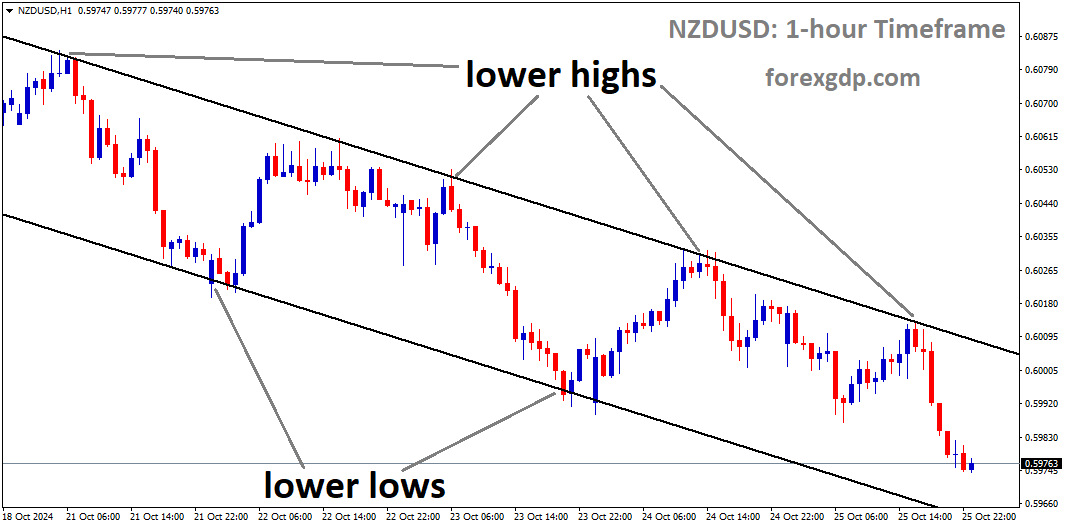
But it’s not all bad news. Political uncertainty can go both ways. While some investors rush to the safety of the US dollar during these times, others might take a step back, which could cause the USD to weaken slightly. The election outcomes, policies, and promises from candidates can have a ripple effect across the global economy, and currency traders will be watching this closely.
How Does Politics Affect Currency?
Elections, especially in big economies like the US, can cause a stir in the financial markets. When political leaders make promises about economic policies, investors adjust their strategies accordingly. For example, if a candidate promises tax cuts or government spending programs, the markets might react by driving the currency up or down, depending on whether they think these policies will help or hurt the economy.
New Zealand’s Housing Market Adds Some Positives
In the face of challenges, there’s a silver lining for New Zealand: the housing market. Rising house prices have been giving a bit of a boost to consumer confidence, despite the other struggles. For many homeowners, the increasing value of their property is a sign that the economy isn’t completely in the doldrums.
The Reserve Bank of New Zealand (RBNZ) has also been keeping a close eye on inflation. The good news is that inflation is finally stabilizing within the bank’s target range, which could mean that the worst of the price hikes might be over. This offers a bit of hope that things could stabilize soon, but for now, it hasn’t been enough to stop the NZD/USD from sliding.
Why Are Traders Watching the US Federal Reserve Closely?
The US Federal Reserve (often just called the Fed) has a lot of influence over the value of the US dollar. Whenever the Fed hints at changing interest rates, traders pay close attention. Recently, the Fed has been suggesting that they might not cut interest rates as aggressively as once thought. This has contributed to the growing strength of the USD.
The reason interest rates matter so much is that they directly impact how attractive a currency is to investors. Higher interest rates tend to draw more investment into that country’s currency because investors can earn more on their holdings. This is why the Fed’s actions are crucial for the value of the US dollar and, consequently, for the NZD/USD pair.
Final Thoughts: What to Watch in the Coming Weeks
The NZD/USD pair has been under pressure, and several factors are contributing to this decline. On the US side, a strong job market, positive economic data, and political uncertainty around the upcoming presidential election are boosting the USD. On the New Zealand side, declining consumer confidence and economic challenges are weighing down the NZD.
As a trader or someone just watching the markets, keeping an eye on key data points—like consumer sentiment indexes, unemployment data, and central bank decisions—is important. But beyond that, it’s also essential to watch how political events unfold in the US and whether New Zealand’s economic policies can bring back some of the lost confidence.
While it’s difficult to predict the exact direction the NZD/USD will take in the short term, paying attention to these broader factors will give you a better idea of what might be coming next.









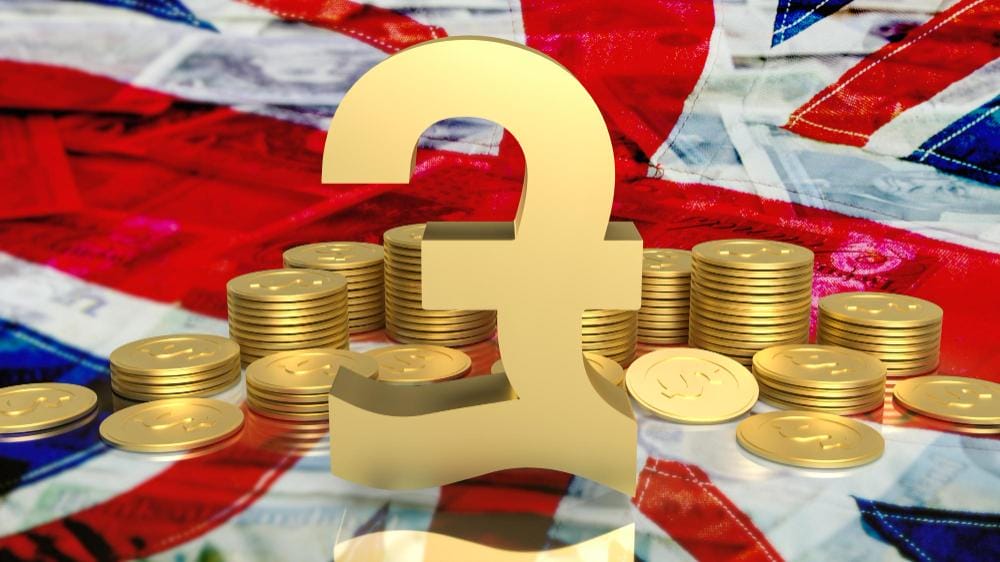



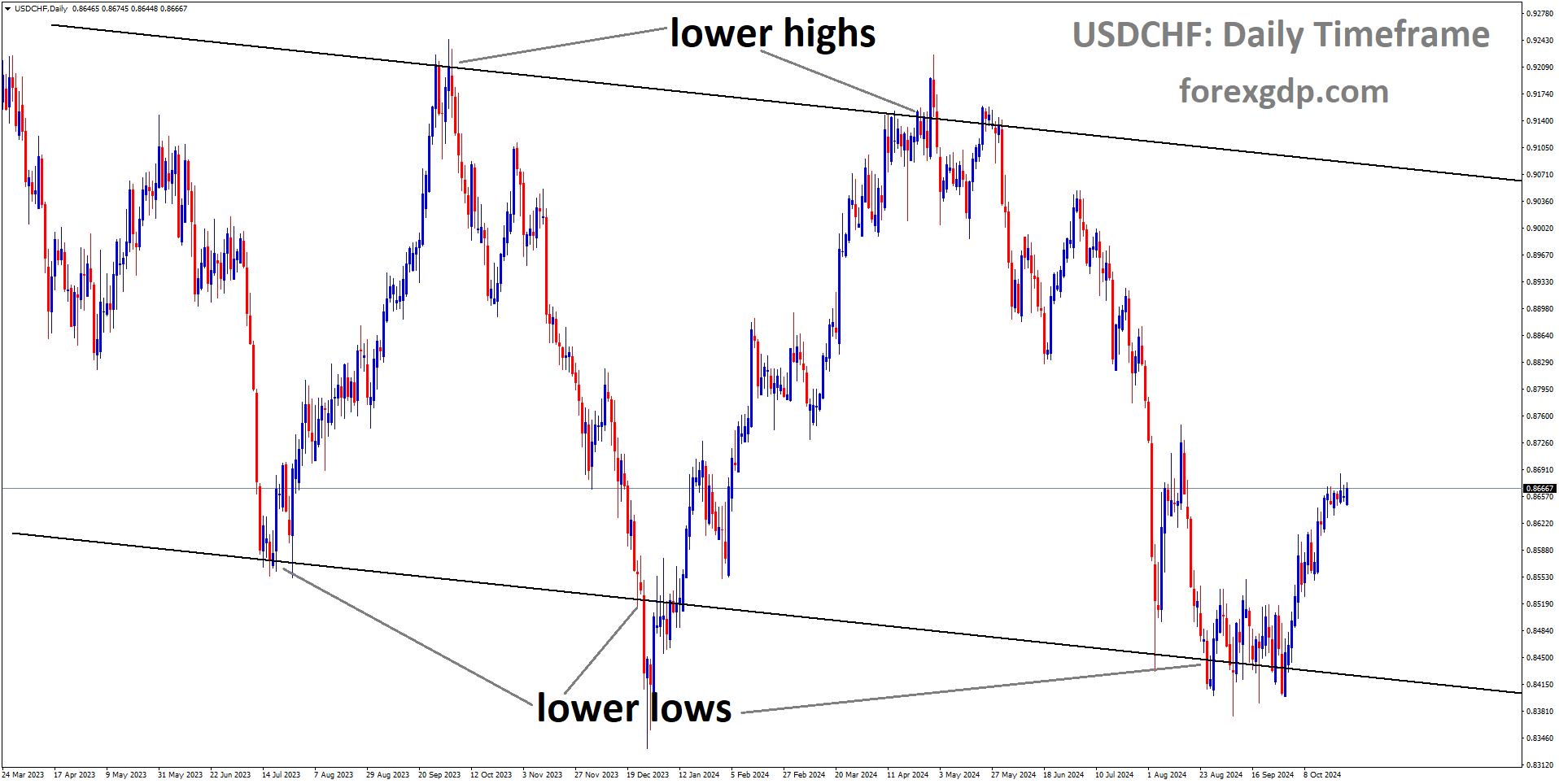


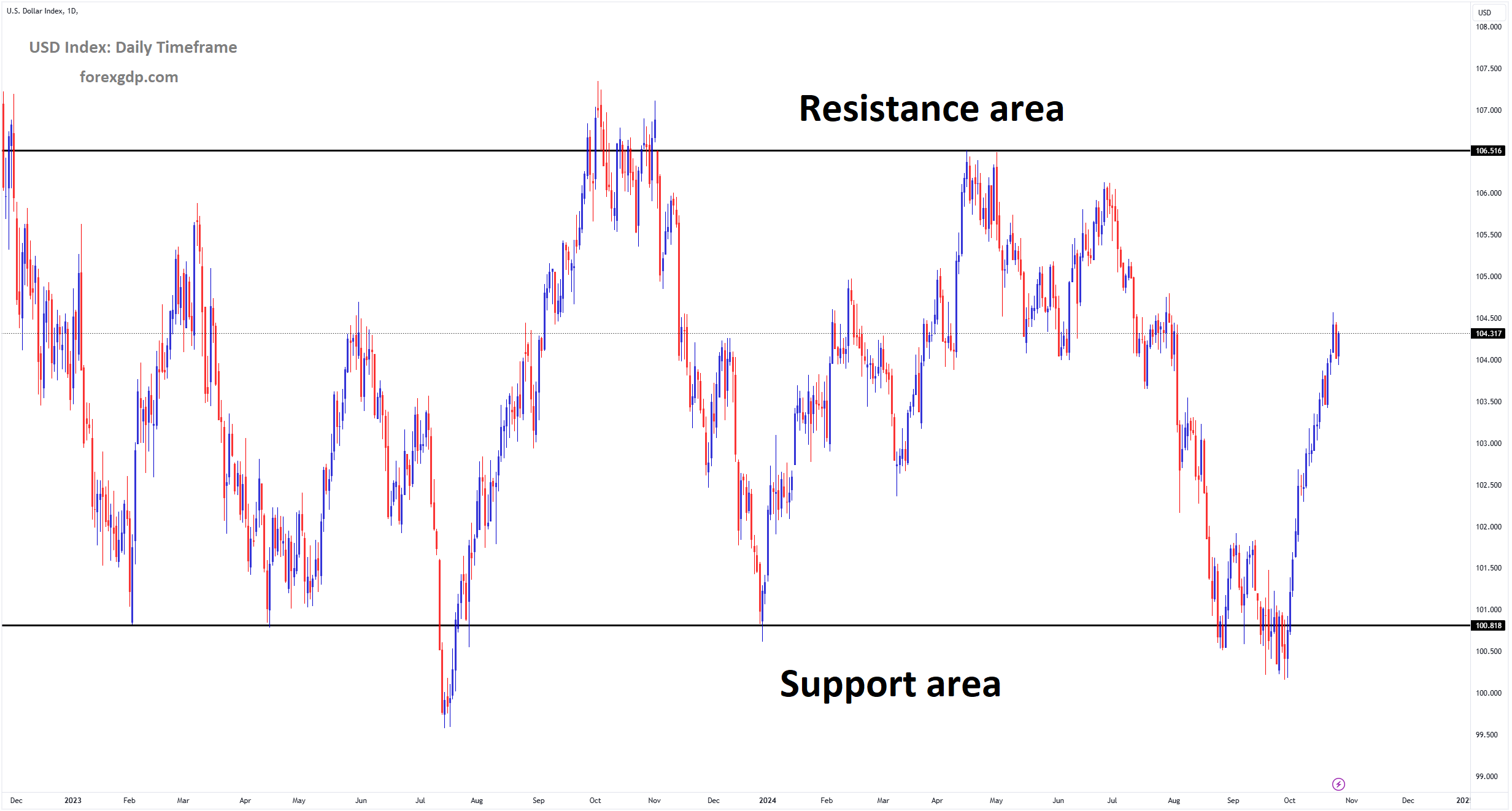





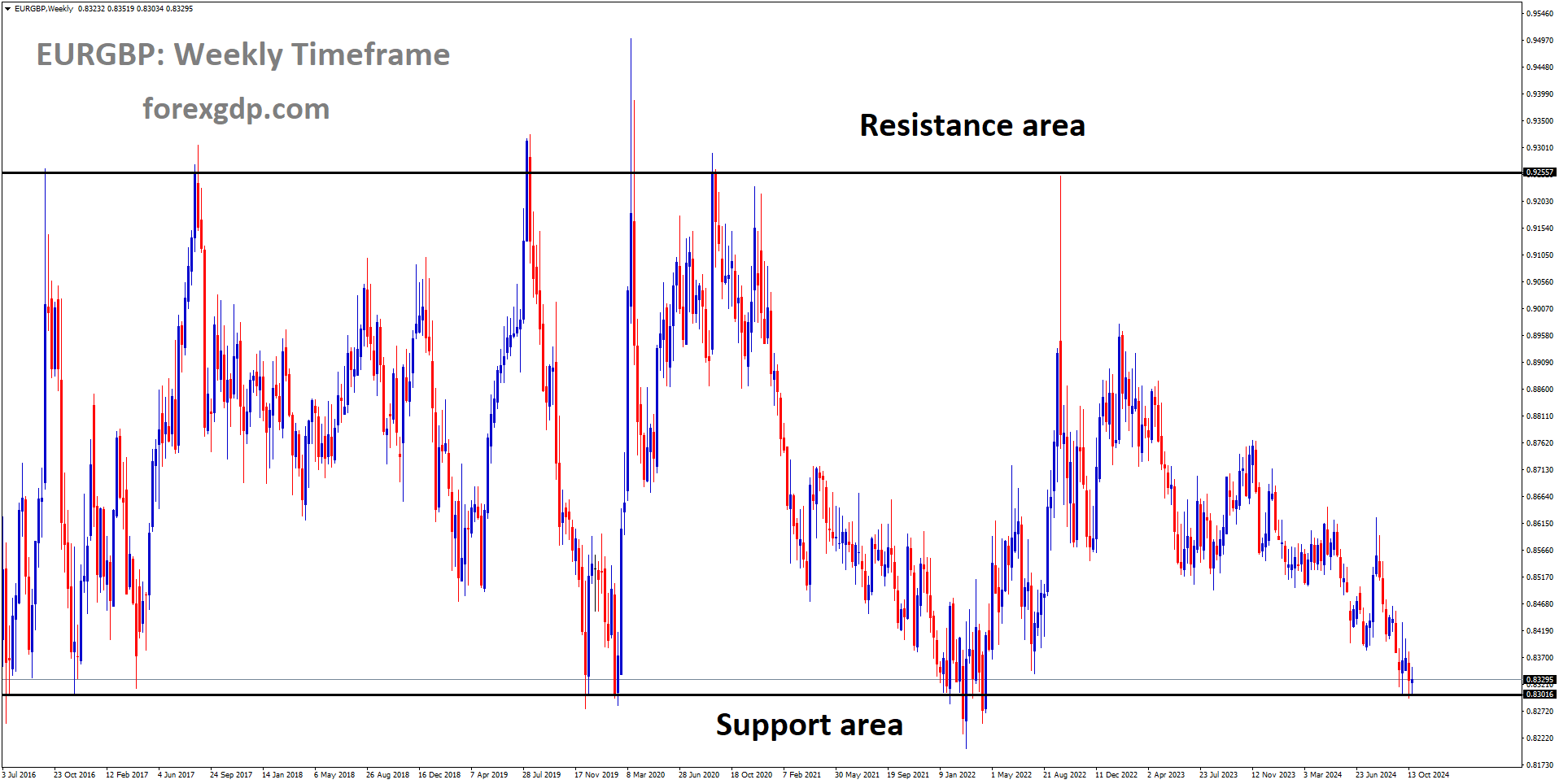

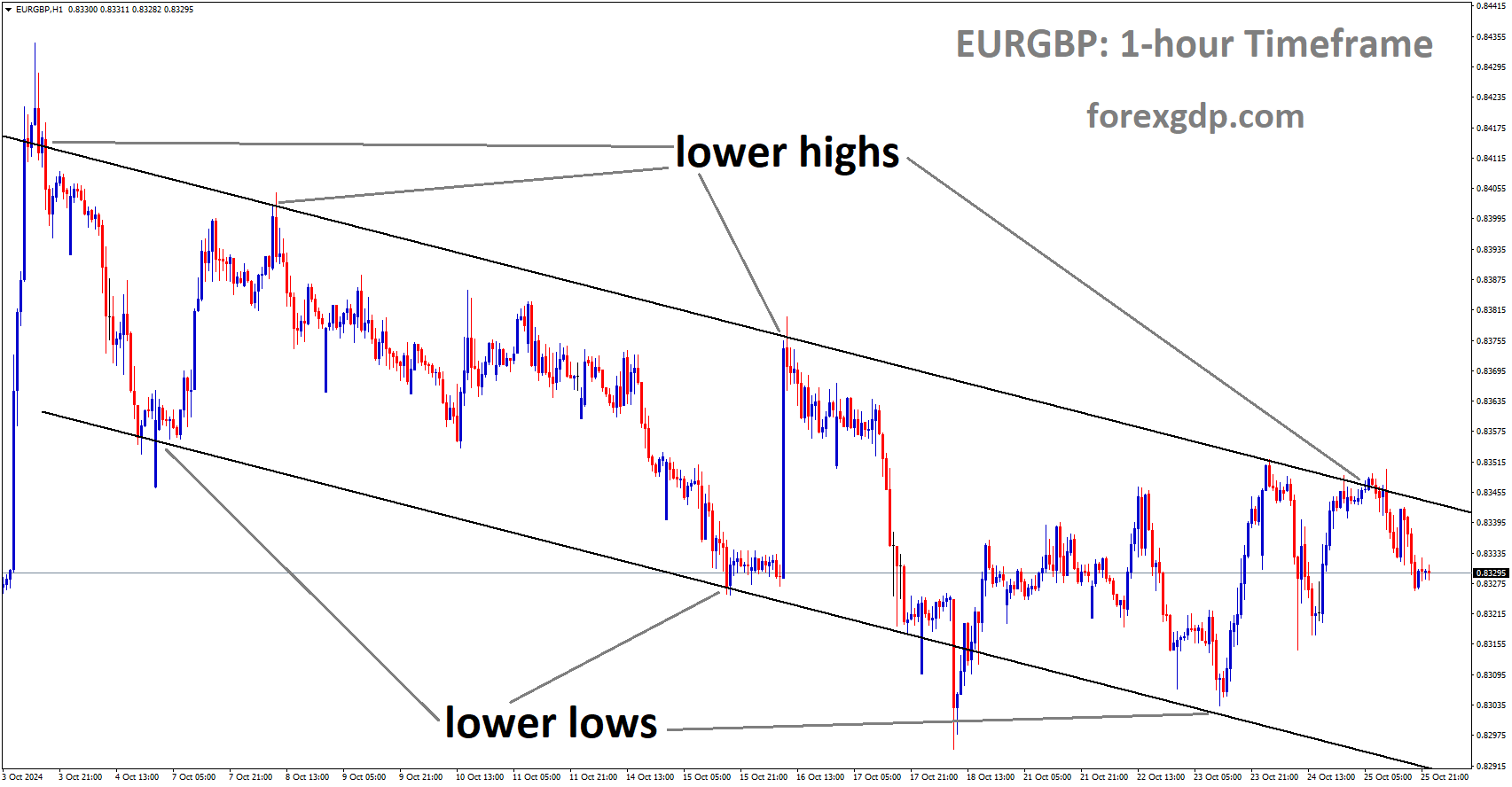 EURGBP is moving in a descending channel, and the market has fallen from the lower high area of the channel
EURGBP is moving in a descending channel, and the market has fallen from the lower high area of the channel

